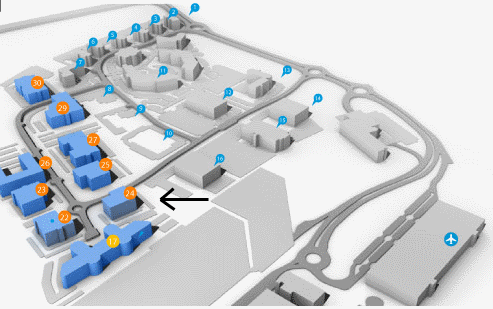Current Size: 100%

- Publications
- Cancer atlases
- Results
NCR books
- Cancer Atlas
- Acknowledgements
- Foreword
- Summary
- 1. Introduction
- 2. Methods
- 3. Non-melanoma skin cancer
- 4. Breast cancer
- 5. Colorectal cancer
- 6. Lung cancer
- 7. Prostate cancer
- 8. Non-Hodgkin's lymphoma
- 9. Stomach cancer
- 10. Melanoma of the skin
- 11. Bladder cancer
- 12. Head and neck cancer
- 13. Leukaemia
- 14. Pancreatic cancer
- 15. Kidney cancer
- 16. Oesophageal cancer
- 17. Ovarian cancer
- 18. Brain and other central nervous system cancer
- 19. Cancer of the corpus uteri
- 20. Cancer of cervix uteri
- 21. Discussion
- 22. Conclusions and recommendations
- Appendix 1: Relative risks (with 95% confidence intervals) by area characteristic, cancer site and sex
- Appendix 2: Electoral division tables
- Appendix 3: Summary statistics for each cancer site
- Appendix 4: Regions referred to in the atlas
- References
- Index of figures, maps and tables
Results
The risk of developing many of the cancers presented here was higher in RoI than in NI. The risk of non-melanoma skin cancer, melanoma, leukaemia, bladder, pancreas and brain/central nervous system cancers was significantly higher for both sexes in RoI. For men, the risk of prostate cancer was higher in RoI and, for women, cancer of the oesophagus and cervix. In NI, the risk of lung cancer was higher for both sexes as was that among women for non-Hodgkin’s lymphoma, head and neck cancers and cancer of the uterus. Overall, the relationships between socio-economic variables and cancer risk were similar for men and women. Patterns consistent with known socio-economic gradients were seen—lung, stomach, head and neck and cervical cancers were all more common in areas of higher unemployment and/or lower levels of degree attainment, while non-melanoma skin cancer, female breast cancer, prostate cancer and melanoma were less common. Most cancers were also more frequent in urban areas (as measured by population density); only prostate cancer was more common in rural areas.
Mapping also demonstrated broadly similar geographical patterns for men and women for most cancers. However, apart from this, there was little consistency between different cancer sites in the geographical distribution of risk. There was a marked geographical variation in the risk of some common cancers—non-melanoma skin, lung, prostate and stomach, but very little for others—breast, colorectal, non-Hodgkin’s lymphoma. The most consistent geographical distribution of cancer risk was seen for three cancers (pancreas, brain/central nervous system and leukaemia) which showed an increasing gradient of risk from north-east to south-west.
Eighteen cancer sites were studied, and the results are described in more detail below, in order of cancer frequency.
Non melanoma skin cancer
Non-melanoma skin cancer was 18% commoner in women and 15% commoner in men in RoI than in NI. The risk was higher in more affluent areas, in areas with high levels of elderly living alone, in more densely populated districts and in coastal and urban areas.
Breast cancer
There was no statistically significant difference in female breast cancer risk between RoI and NI. Risk increased with increased population density and affluence. Geographical patterns changed over time, reflecting the introduction of breast screening in RoI in 2000. During 2002-2007, higher rates were seen in the east of RoI (where screening had begun) than in the west (where it had not).
Colorectal cancer
There was no statistically significant difference in colorectal cancer risk between RoI and NI. Increased risk was associated with increasing population density for both sexes and with unemployment for men only. There were areas of higher risk around Cork and from Donegal to Down.
Lung cancer
The risk of lung cancer was significantly higher in NI than RoI for both men (by 11%) and women (by 7%). Increased risk was associated with increased population density, unemployment and low levels of education and was highest in urban areas of Belfast, Dublin, Derry and Cork, and also in Louth, Kildare, Carlow and Wicklow.
Prostate cancer
The risk of diagnosis of prostate cancer was 29% lower in NI than RoI. Men in areas with the highest educational attainment had the highest risk. The risk was highest in the south and east of Ireland during 1995-2001 and in the west and north of RoI during 2002-2007.
Non-Hodgkin’s lymphoma (NHL)
There was no significant difference in risk between NI and RoI for men but the risk for women was 14% higher in NI. There was no association between NHL risk and population density or socio-economic factors. The highest risk for men was in the north-east, and in Kerry and Galway and in the north-east and Dublin for women.
Stomach cancer
Stomach cancer risk was higher in areas of high population density and in those with high unemployment and lower educational attainment. There was a strong geographical pattern, with higher risk in a band running from Dublin to Donegal, excluding the north-east, but including Belfast.
Melanoma of the skin
Melanoma risk was lower in NI than RoI for both men (by 8%) and women (by 14%). Risk was not associated with population density; but was associated, for both men and women, with low unemployment and high educational attainment, and was highest in coastal areas in the south and east of Ireland.
Bladder cancer
Bladder cancer risk was lower in NI for men (by 8%) and for women (by 14%) than in RoI and increased with population density (for both sexes) and unemployment (men only). Male geographical patterns were distinctive, with increased risks from Louth to Wicklow, including Dublin city, and also in Donegal, North Down and Ards. For women, there was an area of higher risk in the south-west.
Head and neck cancer
The risk of head and neck cancer was greater, by 21%, for women in NI compared to RoI but there was no statistically significant difference for men. The risk increased with increased population density and unemployment but not with educational attainment. There was no clear geographical pattern for men, but for women there was one large area of higher relative risk stretching north-westwards in a line between Dublin and Sligo.
Leukaemia
The risk of leukaemia was lower in NI than in RoI, by 23% for men and 17% for women. There was no association with population density, employment or educational attainment. Mapping showed an increasing gradient of increasing risk from north-east to south-west, more pronounced in men.
Pancreatic cancer
Pancreatic cancer risk was lower in NI than in RoI, by 11% in men and 22% in women. Increased risk was associated with higher unemployment, but only for men. In women the risk increased with decreasing levels of educational attainment. There was a gradient across the island, with increased risk in the south-west and lowest in north-east; this pattern was more marked in women than men.
Kidney cancer
There was no statistically significant difference in risk between NI and RoI and no association with either population density or socio-economic factors. The area of highest risk was mainly in Leinster, with a lower relative risk in the west.
Oesophageal cancer
The risk was 8% lower in NI than RoI for women but there was no statistically significant difference for men. Risk increased with increasing population density for both sexes but there was no association with unemployment or educational attainment. The area of highest risk was south of a line from Dublin to Kerry, with areas of low risk in the north-west.
Ovarian cancer
There was no association with country, population density or socio-economic factors. The areas of highest risk were around Cork city, extending more widely across most of Munster and also in the eastern half of NI, excluding parts of Down and Belfast.
Brain and other central nervous system (CNS) cancers
The risk of brain and other CNS cancer was lower in NI than RoI, by 10% for men and 20% for women. There was a weak positive association with population density for women only, and no association with socio-economic variables for either sex. There was a strong geographical pattern, with the highest risk in the south-west and lowest risk in the north-east.
Cancer of the corpus uteri
The risk of cancer of corpus uteri was higher by 11% in NI than in RoI. There was no significant association with population density or socio-economic variables. Higher risk was noted in Connacht, most of Northern Ireland and parts of Munster.
Cancer of the cervix uteri
The risk of cancer of the cervix was significantly higher, by 11%, in RoI than NI and increased with increasing population density, unemployment and poor educational attainment. The areas of highest risk were around Dublin, extending to Wexford and the midlands. Areas around Cork, Waterford, Belfast and Sligo also had higher risk.
Building 6800
Cork Airport Business Park
Kinsale Road, Cork T12 CDF7
Email Contact us here
Tel: +353 (0) 21 4318014
Fax: +353 (0) 21 4318016




